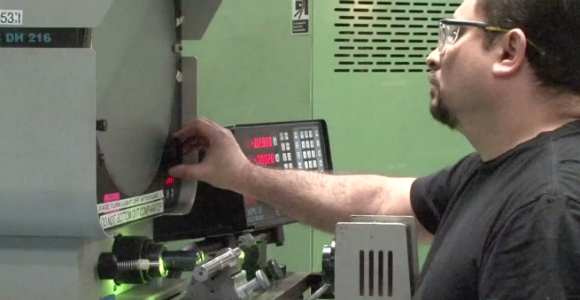
(Photo Credit: John Guenther)
California is a big complex state, with regional economies that are really quite different. But they also all have some things in common.
One of those is a need for a qualified workforce—a term that in plain English means having enough workers for the jobs that are available.
The California Economic Summit, now in its third year, develops its goals by engaging leaders across the state—and from the beginning a trained workforce has been at or near the top of the list. The need is growing more apparent every day.
The Council for a Strong America released a report this week (PDF) that says California will face a deficit of 2 million trained workers in the next decade. Of that number about it’s estimated about half the workers will require bachelor degrees. The report, “Fortifying the Inland Empire’s Talent Pipeline: Closing our “Skills Gaps” through Linked Learning,” forecasts considerable job growth in the technical and professional job sectors and estimates that, by 2020:
- 66 percent of the jobs created in California will require some type of formal education beyond high school;
- 50 percent of the high-growth and high-wage jobs in the Inland Empire will require an associate’s degree or higher; and
- 96 percent of jobs in the science, technology, engineering, and math (STEM) occupations will require some postsecondary education.
While this report focuses on the future and what to do about it—understand that this job skills issue is very much an issue today.
“We’ve been looking for a quality control inspector and quality engineer for three months. We need candidates who have good problem-solving skills and a basic understanding of how to provide leadership on the manufacturing floor. Another area where we are struggling to find skilled talent is our tool room,” said Michael Bermudez, Vice President and General Manager of Walker Corporation.
Inland Empire business leaders spoke out in support of regional education reform efforts currently underway to help reverse the skills gap. Linked Learning was cited as an innovative education approach that infuses career relevance into students’ daily curriculum and offers real-world work experiences.
“Inland Empire employers are seeking a highly talented workforce in industries that are critical to California’s economy,” said Michael Gallo, President & CEO of Kelly Space & Technology, Inc. “To build a robust talent pipeline, young people must understand what it takes to get a good job. Exposing students to career options early and helping to direct their paths is vital to building our future workforce.”
Linked Learning is transforming high school education by helping students understand why they need to know what they are being taught in the classroom, and it keeps them engaged in school. These “career academy” pathways are composed of approximately 200 students who stay together as a cohort, typically with the same teachers, for the duration of their high school experience. This helps inspire a sense of teamwork while students work to develop the 21st-century skills that employers today desire and demand: effective communication, critical thinking, and problem-solving skills.
Throughout the state, Linked Learning career pathways are being tailored to regional hiring needs.
“In San Bernardino City Unified, our pathways focus on high-demand sectors such as teaching, manufacturing, logistics, and health care. These are industries that we know will continue to grow here in the Inland Empire. Our goal is to have every one of our 49,000 students in a career pathway by 2017,” said San Bernardino City Unified School District Superintendent Dr. Dale Marsden. “The key to our success is collaboration. We have developed some great partnerships with post-secondary institutions, employers, and other community partners.”

